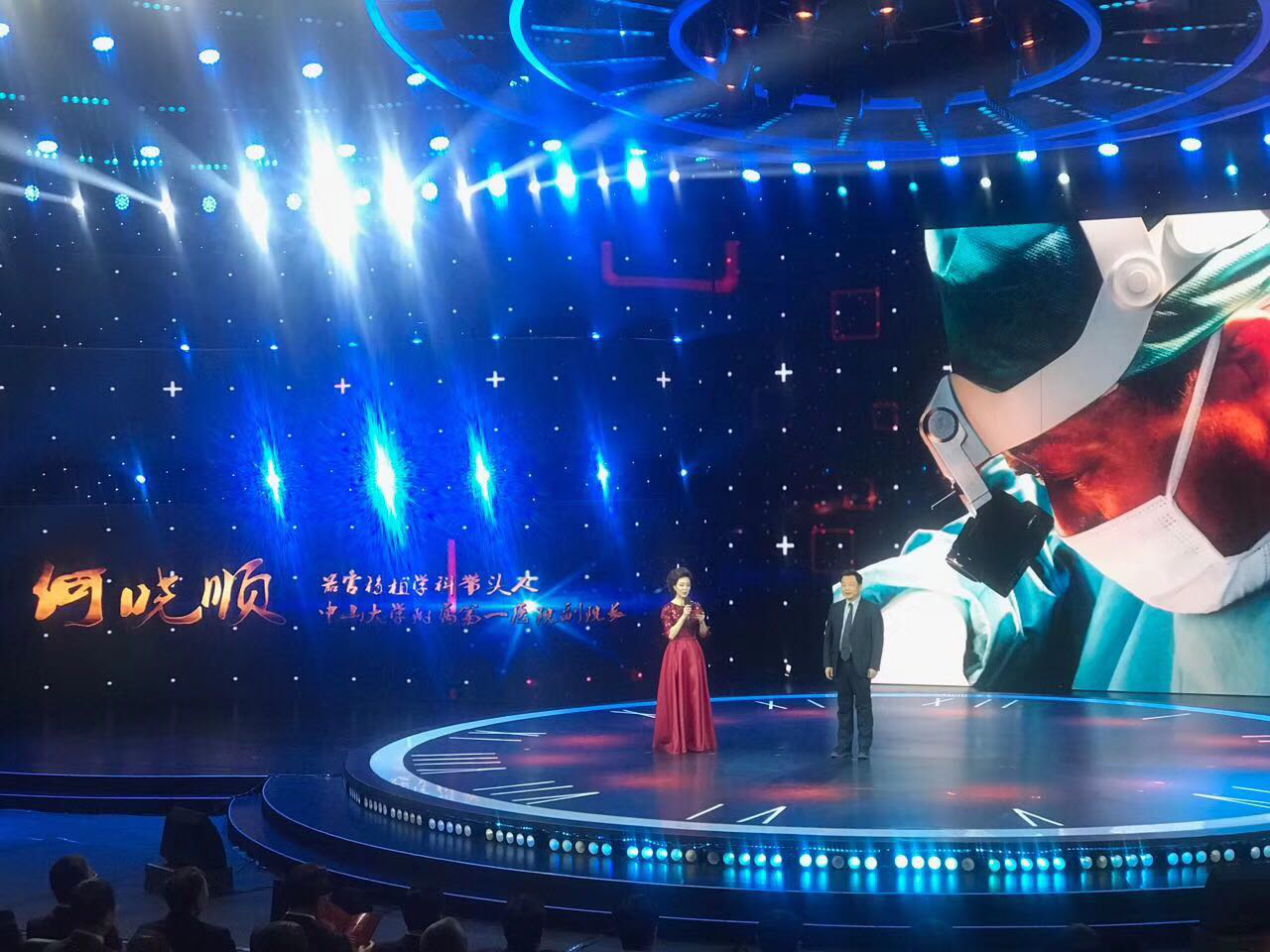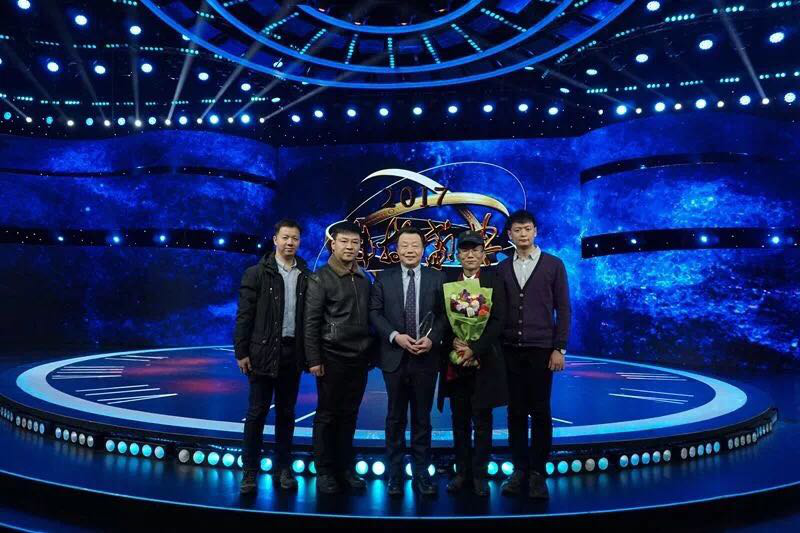Prof. He Xiaoshun is awarded the "China Top Ten Science and Technology Innovation Figures"
Recently, the award ceremony for 'Science and technology festival -Annual Science and Technology Innovation Figures" was hold by CCTV. Prof. He Xiaoshun won the title of “China Top Ten Science and Technology Innovation Figures” for his remarkable contributions to organ transplantation. Simultaneously, award winners included Prof. Su Quanke, the chief engineer of the world-class project, Hong Kong-Zhuhai-Macao Bridge, the research and development group of the first quantum satellite 'Mozi" in the world and the high-speed railway technology research group and so on. This event, launched by CCTV and Chinese Academy of Sciences, along with the other six national ministries, is honored as “Oscar” of the scientific community in China. It aims to award those who make the annual major science and technology innovations and developments, which directly promote the related field of international science and technology.

As the vice president of the First Affiliated Hospital of Sun Yat-sen University and the chief of Dept. of Organ Transplantation, Prof. He is committed to solving the key scientific and technological problems in organ transplantation. Tremendous of pioneering works in organ transplantation has been achieved by his team. On July 23, 2017, he performed the first ischemia-free liver transplantation?(IFLT)?in the world. During the traditional organ transplantation, the interruption of blood flow is inevitable, which causes ischemia and reperfusion injury, seriously affecting the prognosis of transplantation, and even leading to graft failure. Despite great efforts made by scientists worldwide in half a century, this 'congenital defect" in organ transplantation has not yet to be fully resolved. Prof. He Xiaoshun and his team invented a device called “extracorporeal organ support system”?to procure, preserve and implant an organ without interruption of blood supply for the organ through a series of technological innovations, achieving that organs are transplanted under physiological conditions. Currently,?fourteen cases of IFLT?have been carried out which have confirmed the surgical procedure and postoperative recovery having?incomparable advantages over traditional surgery. This advance in surgical techniques sets a milestone in transplantation history.?In the near future, the IFLT?will be extended to other organ transplantations, be expected to restructure the theoretical and technical system of organ transplantation,?and bring the development of?organ transplantation into a new era.

The?extracorporeal organ support system enables multiple organs to maintain their functions for a long time in vitro, providing a new platform for the study of organ function, in vitro treatment and organ-to-organ interaction. In addition, the device can be utilised?in other medical/life sciences area including physiology, pharmacology, toxicology, immunology and oncology, which will play an important role for the multidisciplinary and multi-level breakthrough in clinical medicine research in our country. Wang Xuehao, an academician from the Chinese Academy of Engineering, said the device is a disruptive innovation that shows the Chinese?great contribution to organ transplantation. Nancy Ascher, president of the world’s transplantation society?and chair of the UCSF Department of Surgery,?said the IFLT?technique not only has applications for liver transplantation, but also applications for kidney, heart and lung transplantation. She?thought?these techniques would?be applied widespread and would?be applied in other countries as well.

